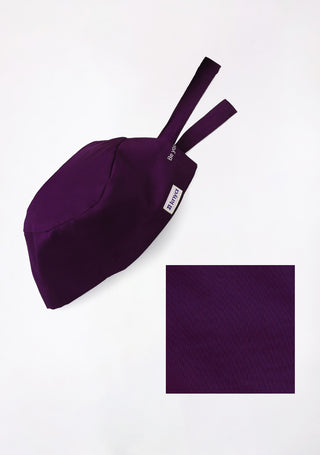The lifespan of a pair of scrubs depends on various factors, including material quality, work environment, washing frequency, and how many pairs you own. While frequent replacement ensures hygiene and a polished look, high-quality scrubs can last longer with proper care. Striking the right balance between replacing scrubs when needed and maintaining sustainability can help you get the most out of your scrubs while keeping a professional appearance.
The Debate Over Scrub Lifespan
There is no one-size-fits-all answer to how long scrubs should last. Some healthcare professionals prefer to replace their scrubs every few months to maintain a polished, fresh look, while others use the same scrubs for years until they show visible signs of wear.
The key considerations in this debate include:
- Hygiene Concerns: Frequent replacement reduces the risk of contamination and bacterial buildup.
- Professional Appearance: Newer scrubs maintain their color, shape, and overall look, which can impact professionalism.
- Cost vs. Quality: High-quality scrubs may last longer, reducing the need for frequent replacements, while cheaper scrubs might need to be replaced more often.
- Environmental Impact: Disposing of scrubs frequently contributes to textile waste, making sustainability an important factor.
Ultimately, the lifespan of scrubs depends on their quality, frequency of use, and how well they are cared for.
Factors That Affect the Lifespan of Scrubs
Several factors determine how long your scrubs will last before needing replacement:
Material Quality
- High-quality fabrics like polyester-cotton blends, performance scrubs, or antimicrobial fabrics tend to last longer than cheap cotton scrubs.
- Lower-quality scrubs may fade, shrink, or become thin after repeated washing.
For our male healthcare professionals, we offer a wide range of comfortable and stylish scrubs for men, designed to enhance both comfort and professional image
Work Environment
- Healthcare workers in high-risk areas (ICUs, emergency rooms, surgical units) may need to replace their scrubs more frequently due to exposure to bodily fluids and contaminants.
- Those in low-risk environments (administrative roles, outpatient clinics) may be able to keep their scrubs for longer.
Washing Frequency and Methods
- Overwashing or using harsh detergents can cause fabric wear and tear.
- Using hot water, bleach, or frequent machine drying may shorten the lifespan of scrubs.
Number of Scrubs Owned
- Rotating between multiple pairs extends the lifespan of each set. Wearing the same scrubs every day will lead to faster deterioration.
Fit and Comfort
- Scrubs that fit too tightly may experience more strain and fabric stress, leading to premature tearing.
Discover the best lab coat designed for comfort and protection. Shop from here.
How Often to Wash Your Scrubs?
Proper washing is crucial for hygiene and fabric longevity. Here are some guidelines:
- Wash scrubs after every shift. Since scrubs come into contact with bacteria, fluids, and contaminants, wearing them unwashed is unhygienic.
- Use cold or warm water to prevent fading and fabric breakdown. Hot water is effective for sanitization but can damage certain fabrics over time.
- Use gentle detergents to avoid fabric weakening. Harsh chemicals can cause discoloration and shrinkage.
- Tumble dry on low heat or air dry to minimize shrinkage and fabric stress.
- Avoid fabric softeners and bleach, as they can degrade the antimicrobial properties of certain scrubs.
When to Replace Your Scrubs?
Even with proper care, scrubs eventually need to be replaced. Here are some signs that it’s time for a new set:
Fading and Discoloration
- If the color has faded significantly, making your scrubs look worn-out, it’s time for a replacement.
- Stains that don’t wash out can impact your professional appearance.
Fabric Thinning or Holes
- If your scrubs are developing holes, frayed edges, or thinning fabric, they are no longer providing adequate coverage.
Persistent Odors
- Over time, bacteria and bodily fluids can accumulate in fabric, leading to lingering odors even after washing.
Loss of Fit
- If your scrubs have shrunk, stretched, or lost their shape, they may become uncomfortable or unprofessional-looking.
Broken Seams or Pockets
- Torn seams, broken zippers, or loose pockets reduce functionality and indicate it’s time to replace your scrubs.
Pros and Cons of Frequent Scrub Replacement
While some healthcare workers replace scrubs regularly, others prefer to maximize their use. Here’s a breakdown of the pros and cons of frequent scrub replacement:
Pros of Frequent Scrub Replacement
- Ensures a clean, professional appearance.
- Reduces risk of bacterial buildup and contamination.
- Provides better comfort and fit with fresh fabric.
- Keeps up with newer, more breathable, and stylish scrub designs.
Cons of Frequent Scrub Replacement
- Higher costs over time.
- Increased textile waste, affecting sustainability.
- Requires frequent shopping and decision-making.
- High-quality scrubs may last longer, making frequent replacement unnecessary.












